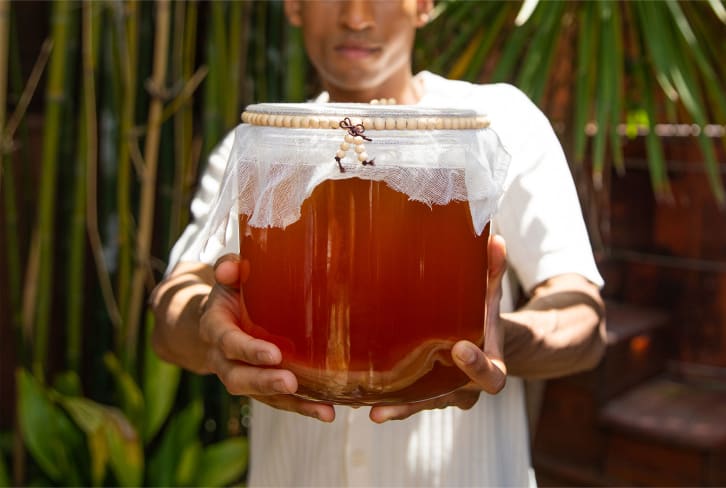Advertisement
How A Holistic Nutritionist Revamps Leftover Or Wilting Veggies


Shopping for and prepping a week's worth of meals in one day feels wholly gratifying. Well, until midweek rolls around, that is. By Day 4, those leftover veggies start to become soggy and downright boring to eat, and the fresh produce you haven't used yet is starting to wilt.
When you're tempted to toss the remains, chef and certified holistic nutritionist Serena Poon, C.N., recommends these five tips for revamping both raw and cooked vegetables:
Pickle them.
For raw veggies.
If you have fresh veggies sitting in your produce drawer on the brink of extinction, Poon recommends pickling them. Pretty much any veggie can be given a new (and more gut-friendly) life when preserved with pickling brine. Here: a dilly green bean recipe and tips for pickling at home.
Sauté your greens.
For raw veggies.
Certain leafy greens tend to wilt quickly due to their high moisture content. While storing them properly can extend their shelf life, you should still use those fresh greens within a week of buying. If you're nearing that deadline, Poon suggests sautéing your greens to serve as a simple side dish. All it takes is a healthy cooking fat, salt, pepper, and a squeeze of lemon.
Roast root veggies.
For raw veggies.
Root vegetables, like parsnips, rutabagas, beets, and Jerusalem artichokes contain an array of health benefits. The simplest (and tastiest) way to utilize root veggies before they go bad is to roast them, Poon says.
Blend veggies into a soup or stew.
For raw or cooked veggies.
Soup is the answer to just about everything: a cold day, a nauseated stomach, and leftover or wilting veggies.
If you have carrots, celery, or onion that need to be used, add them to a chicken soup. If you have roasted sweet potato, pumpkin, or butternut squash that you're sick of reheating, blend it into a creamy soup. Pretty much any other veggies, cooked or raw, can be tossed into a pot to make a nutrient-dense vegetable stew.
Add leftover veggies to your breakfast.
For cooked veggies.
Instead of repeating the same dinner night after night, Poon suggests using your leftover veggies for breakfast. "You can simply fold them into a delicious breakfast scramble, quiche, breakfast burrito with avocado, or a savory pancake," she says.
Bottom line.
If there's a rancid smell or visible mold on your veggies, it's best to compost them, but modest signs of wilting and bruising are usually OK. So, instead of tossing totally edible veggies into the bin, give them a new life with one of the five options above.
Watch Next
Enjoy some of our favorite clips from classes
Enjoy some of our favorite clips from classes
What Is Meditation?
Mindfulness/Spirituality | Light Watkins
Box Breathing
Mindfulness/Spirituality | Gwen Dittmar
What Breathwork Can Address
Mindfulness/Spirituality | Gwen Dittmar
The 8 Limbs of Yoga - What is Asana?
Yoga | Caley Alyssa
Two Standing Postures to Open Up Tight Hips
Yoga | Caley Alyssa
How Plants Can Optimize Athletic Performance
Nutrition | Rich Roll
What to Eat Before a Workout
Nutrition | Rich Roll
How Ayurveda Helps Us Navigate Modern Life
Nutrition | Sahara Rose
Messages About Love & Relationships
Love & Relationships | Esther Perel
Love Languages
Love & Relationships | Esther Perel
What Is Meditation?
Box Breathing
What Breathwork Can Address
The 8 Limbs of Yoga - What is Asana?
Two Standing Postures to Open Up Tight Hips
How Plants Can Optimize Athletic Performance
What to Eat Before a Workout
How Ayurveda Helps Us Navigate Modern Life
Messages About Love & Relationships
Love Languages
Advertisement

How To Use Food To Recover From Autoimmunity: An MD's Top 4 Tips
Sara Szal Gottfried, M.D.











